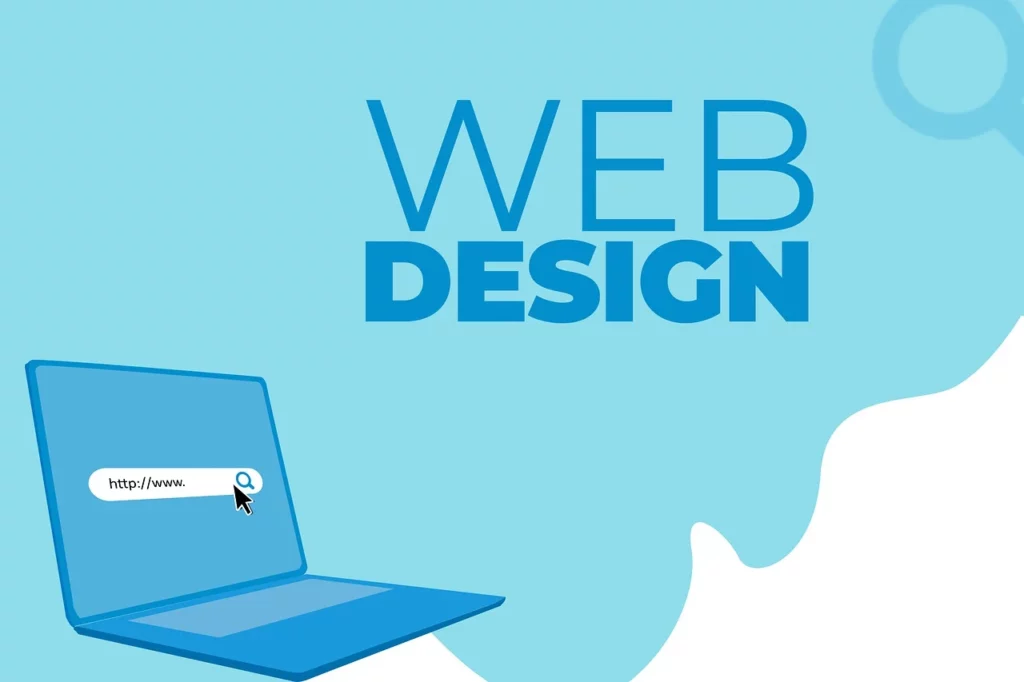Can a well-optimized site have an attractive design? High-quality text content, relevant keywords, competent internal linking, and backlinks from authoritative sites – all this helps to promote Internet resources. However, what about design? Many people focus on SEO optimization, forgetting that visitors come to the site, and for them, the design of the resource plays an essential role. So can we combine SEO and website design to get an SEO-friendly beautiful design of your site? If so, what will such an “ideal” website design with SEO look like? Let’s take a look at some examples.
As you already know, having an online presence is a must for today’s businesses. If you want to stay competitive and ensure people find your brand when searching, you can not avoid this step and should build a website.
What is Website Design with SEO?
One can name many arguments proving that SEO and web design as allies in creating a unique website. For a good site, it is essential to use off-page optimization and a sufficient amount of backlinks, etc. If the site has well-thought-out web design SEO, it improves its position, and you apply backlink indexing service to get the top position in Google ranking faster. Using SEO in web development and integrating these SEO strategies into your web design process will improve the indexing process and help your site rank higher in SERPs (Search Engine Result Pages).
The Key to Balance between SEO and Website Design

High-quality websites are those trying to find the right balance between SEO and graphic design. Such websites are characterized by pretty good external and internal optimization (internal linking, structured text containing helpful information for visitors, etc.). In terms of design, these sites are quite informative. Disc photos are the dominant element on each page, visually highlighting its most important parts and improving the perception of information as a whole. At the same time, the application of the “rule of thirds” is visible in web design.
Following experts’ recommendations, it is quite easy to achieve the optimal balance between SEO and website design. Now, let’s have a look at a list of the best actionable recommendations:
1. Simultaneity
In the initial phase of your website’s creation, start thinking about its optimization for the search engines. When choosing keywords or phrases, try to imagine how they can be integrated into the design: from text, tags to code. Keywords added in the form of graphical elements after the design is completed can break the integrity of the perception of the entire site.
2. The Principle of KISS (keep it simple, stupid)
Today, to develop a really good site, it is not more necessary to use fancy graphic elements (of course, if you are not doing a web project for yourself and aiming to demonstrate your talent to everyone in this way). As you know, people don’t get excited about sites designed in a flash or containing fancy applications. In addition, the use of Flash technology “slows down” the page loading, which is especially annoying for the clients who need to get info quickly. Another plus in favor of a simple design is the location of the search engines. Websites with a simple design are easier to optimize and promote in TOP.
If you still decide that you can’t do without a flash, follow these rules:
- do not include important content in a flash;
- do not use flash technologies to create site navigation;
- do not place the entire web project on one page.
3. Good Web Design Attracts Links
An important part of the SEO optimization process is gathering backlinks on other Internet resources. Good design attracts Internet users and increases their trust in the site. Want to get external links to a web project? Send the developed resource to special exhibitions. For example, you can place it in one of the CSS site galleries (cssnature.org, bestwebgallery.com, etc.). Important links from external resources can be placed in the footer. At the same time, the footer does not have to look gray and boring.
4. Friendly Scripts
When using technologies such as JavaScript, you need to be careful. Javascript allows you to create a wide variety of effects, but any mistake made when using this technology can lead to many problems. It is traditionally believed that search engines cannot process javascript requests, resulting in content even with professional editing not being recognized or indexed. jQuery can be an alternative to JavaScript. Firstly, it allows you to create links for search engines. Secondly, it gives you the possibility to create impressive visual effects.
5. Modern Navigation
High-quality SEO and website design require a clear website structure. It is worth abandoning uncomfortable menus containing sub-items of the third level and return systems using the “Back” button. Instead, it is more expedient to implement a journey through the site’s pages on the “breadcrumb” or breadcrumb navigation.
Conclusions
Summing up, web design SEO is essential. When we invest in developing a good site, we want it to be highly presentable and SEO friendly, with pleasing visuals and offer functional, simple, and intuitive navigation. In the conditions of high online competition, SEO optimization and the website design are equally important. At the same time, you should not focus on one thing. A healthy combination of good SEO and good design is the key to online campaign success.
Author Bio:
Frank Hamilton is a blogger and translator from Manchester. He is a professional writing expert in such topics as blogging, digital marketing and SEO. He also loves traveling and speaks Spanish, French, German and English.
